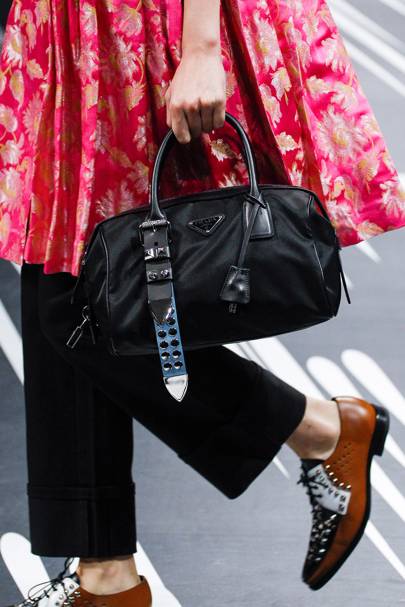A belt bag, a tote, a duffle, two backpacks and a shoulder style complete the unisex capsule collection made in collaboration with Aquafil, an Italian company with more than half a century of expertise in creating synthetic fibres. Not only is the entire range produced from environmentally-friendly materials – yes, Prada’s triangular logo has gone figuratively, if not literally, green – a percentage of the proceeds will be donated to UNESCO’s sustainability teaching programmes.
“This project highlights our continued efforts towards promoting a responsible business,” said Lorenzo Bertelli, Prada’s head of marketing and communication. The announcement follows the news that the Prada Group, which also includes Miu Miu, will no longer use animal fur in its products, and echoes creative director Miuccia Prada’s commitment to social responsibility. “Focusing on innovative materials will allow the company to explore new boundaries of design, while meeting the demand for ethical products,” she said in May

When Prada first introduced the now-iconic nylon backpack to the luxury fashion sphere in 1984, it was “really an idea”. “I was searching,” Mrs Prada told Vogue in 2018, “because I hated all the bags that were around. They were so formal, so lady, so traditional, so classic.” It took 10 years – and the early Nineties obsession with grunge – to convince the fashion industry that her accessories – which were initially made in a military parachute factory – were stylish, just not “the traditional, conservative idea” of stylish. Decades later, her perception of luxury as an idea, rather than just a product, still resonates.
In order to balance out the bottom line for the company’s extensive textile research, which will be shared via a short video series in collaboration with National Geographic, the Re-Nylon edit retails for roughly 20 per cent more than Prada’s signature nylon bags. Once the material is eradicated from Prada’s resources by 2021, it hopes to be able to reduce costs.

No comments:
Post a Comment